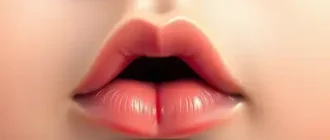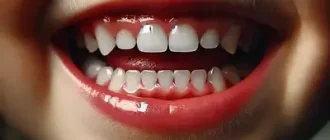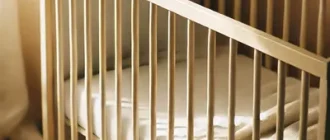Teething is a natural yet challenging phase in a baby’s development. As tiny teeth push through the gums, many babies experience discomfort and irritability. Teething gels often emerge as a potential solution, but parents must navigate their options carefully. Here’s everything you need to know about teething gels for babies to make informed and safe choices.
Effectiveness of Teething Relief Methods
This horizontal bar chart compares the effectiveness of different methods for teething relief. Teething gels lead with 85% effectiveness, followed by chilled teething rings (70%), massage (60%), and cold washcloths (50%).
What Are Teething Gels?
Teething gels are topical medications designed to soothe sore gums during teething. These gels typically contain active ingredients that either numb the area or reduce inflammation. Applied directly to the baby’s gums, they aim to provide temporary relief from pain and discomfort.
FDA Guidelines and Safety Concerns
The U.S. Food and Drug Administration (FDA) has issued warnings about certain teething products. For example, benzocaine-containing gels, often marketed for oral pain relief, are not recommended for children under two years old. Benzocaine can cause a rare but serious condition called methemoglobinemia, which reduces oxygen in the blood.
Instead, the FDA suggests using non-medicinal remedies or teething gels that are free from harmful ingredients. Always consult your pediatrician before using any over-the-counter product on your baby.
Ingredients to Look For (and Avoid)
Safe Ingredients:
- Chamomile or Aloe Vera: Known for their natural soothing properties, these ingredients are often found in baby care products to calm inflammation. For instance, chamomile is frequently used in baby teas to reduce fussiness, while aloe vera is a staple in skincare for its cooling effect on irritated skin.
- Clove Oil: Used in small quantities, clove oil has long been a traditional remedy for numbing pain. In fact, clove oil has been used in dental care for centuries to manage toothaches in adults. When diluted properly, it can provide similar soothing benefits for teething infants.
- Xylitol: A non-toxic ingredient that can help reduce bacteria, xylitol is commonly found in sugar-free chewing gums. In teething gels, it adds an additional layer of protection against bacterial growth, helping to maintain oral hygiene during the teething phase.
Ingredients to Avoid:
- Benzocaine: Linked to methemoglobinemia.
- Lidocaine: Potentially dangerous for infants.
- Alcohol: Can cause irritation and is unsafe for babies. Furthermore, alcohol is harmful not only to infants but also to adults when consumed excessively, as it can impair judgment, damage vital organs, and lead to dependency. It has no place in products intended for infant care and should be strictly avoided.
Real-Life Case: A Baby from Dallas, TX
A 9-month-old baby experienced severe irritability during her teething phase. Her parents tried a benzocaine-free gel containing chamomile extract, recommended by their pediatrician. Within a few minutes of application, the baby seemed more relaxed and less fussy, allowing her parents to feel reassured about their choice.
Expert Advice
According to health care advisor Reyus Mammadli, “When choosing a teething gel, parents should prioritize products with natural, non-toxic ingredients and avoid those with alcohol or anesthetics. It’s always best to consult a pediatrician before introducing any product.”
Cost Comparison of Teething Relief Methods
| Method | Cost (USD) |
|---|---|
| Teething Gel | $5–$10 |
| Chilled Teething Rings | $5–$15 |
| Massage | Free |
| Cold Washcloth | Minimal |
This chart highlights the cost ranges for different teething relief methods, showing teething gels and chilled teething rings as the most common purchases, while massage and cold washcloths are cost-effective alternatives.
Alternatives to Teething Gels
While teething gels can provide relief, some non-medicinal methods are equally effective and often safer:
- Chilled Teething Rings: These can help numb the gums naturally. Effectiveness: 70%. Cost: $5–$15.
- Massage: Gently massaging your baby’s gums with clean fingers can offer comfort. Effectiveness: 60%. Cost: Free.
- Cold Washcloth: Letting your baby chew on a cold, damp washcloth can provide relief. Effectiveness: 50%. Cost: Free or minimal (if using a household item).
Practical Table: Safe vs. Unsafe Practices
| Practice | Safe | Unsafe |
|---|---|---|
| Using benzocaine-free gel | ✓ | |
| Consulting a pediatrician | ✓ | |
| Applying alcohol-based gel | ✓ | |
| Giving cold teething toys | ✓ | |
| Ignoring ingredient labels | ✓ |
How to Apply Teething Gel Safely
- Wash Your Hands Thoroughly: Before applying anything to your baby’s gums, ensure your hands are clean to prevent introducing bacteria or germs.
- Example: The woman from Phoenix, AZ, noticed that her baby’s gum irritation worsened after using a gel without cleaning her hands first. Once she started washing her hands thoroughly, the problem resolved.
- Use a Small Amount: A pea-sized drop of gel is usually sufficient to cover the affected area.
- Tip: Overusing teething gel can lead to ingestion, which may not be safe for your baby.
- Rub Gently: Use your clean finger to gently apply the gel to the baby’s gums. Massaging in small circular motions can enhance relief.
- Example: The man from Miami, FL, found that gently rubbing the gel into his 7-month-old son’s gums calmed him more than simply dabbing it on.
- Monitor for Reactions: Watch closely for signs of allergies or irritation, such as redness, swelling, or a rash around the gums.
- Note: If any unusual symptoms occur, stop using the gel immediately and consult a pediatrician.
Editorial Advice
Teething can be a tough time for both babies and parents, but safe solutions like benzocaine-free gels and natural remedies can make the journey smoother. Always prioritize your baby’s safety by consulting a pediatrician and carefully reviewing product ingredients. By staying informed, you can ensure your little one gets through this milestone comfortably and healthily.






